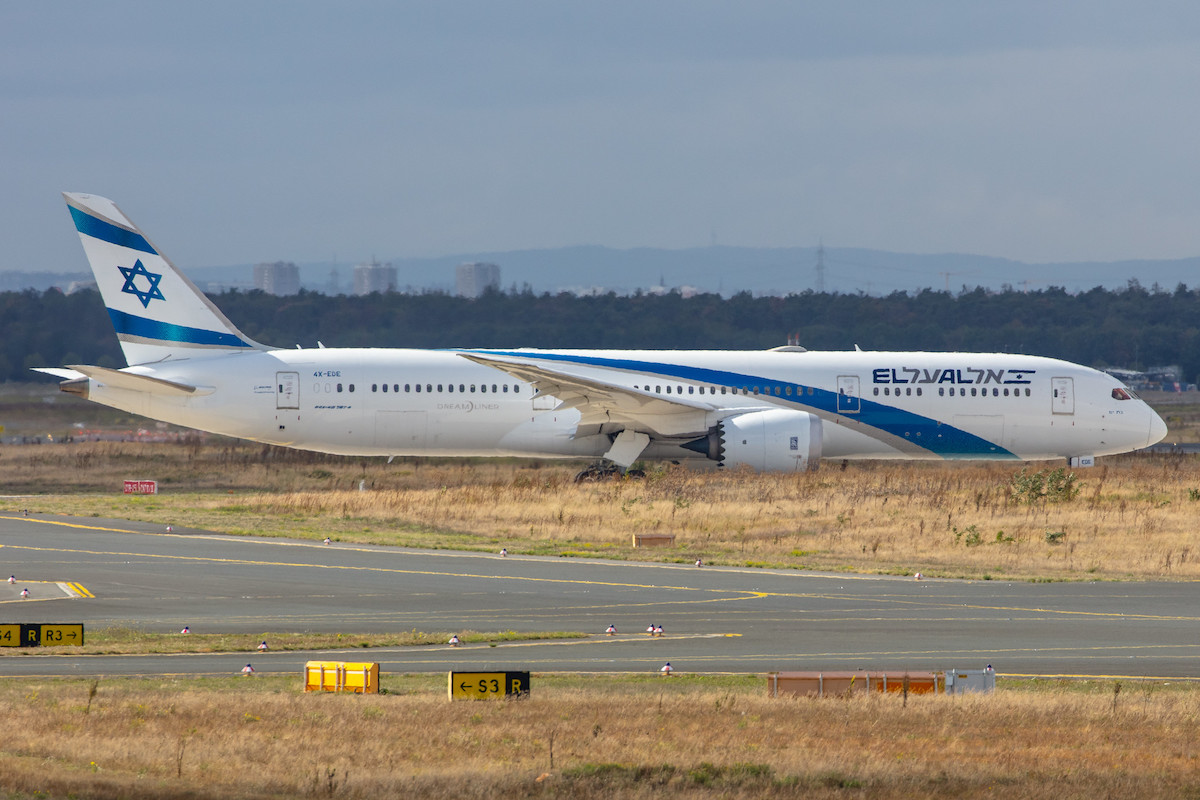El Al Emerges from Pandemic with Strongest Annual Profit Since 2015

Photo Credit: Flickr / Kevin Hackert
Things are looking up for El Al. Last year, Israel’s largest airline enjoyed its most profitable year since 2015, earning just shy of a 6 percent operating margin. That follows heavy losses in 2020 and 2021, and an operating profit just barely above breakeven in 2019. At the net level, El Al’s profit was $109 million last year.
The story was a positive one for the fourth quarter as well. In the final three months of 2022, El Al’s operating margin was 8 percent, a vast improvement from the negative 4 percent it recorded in the same period in 2019. The airline has historically struggled in the winter months, earning most of its profits during summers.
In a presentation last month, El Al’s management discussed the carrier’s encouraging results, noting that revenues in the fourth quarter reached 108 percent of their level three years earlier, even as capacity, measured in available seat kilometers (ASKs), was still just 81 percent recovered. Like most other airlines worldwide, El Al has seen both its revenues and costs increase from pre-pandemic levels, with revenues getting a boost from strong demand. This includes strong demand from inbound tourists, with Israel recording almost 3 million visitor arrivals in 2022. That, however, is still well below the almost 5 million it welcomed in 2019. Arrivals during the first few months of 2023 are likewise trailing those of comparable months prior to the pandemic, though the gap is narrowing. Outbound travel, meanwhile, is trending up from pre-Covid levels. According to Globes, citing data from Israel’s Central Bureau of Statistics, Israelis made 1.2 million trips abroad in the first two months of 2023 compared with 995,100 in the first two months of 2020. The pandemic began shutting down air travel that March.
Based on Diio by Cirium schedules, seat capacity to and from Israel will be up 4 percent in the April-to-June quarter than it was in 2019. That’s thanks to some new airlines that have entered the market in recent years, including the Gulf carriers Emirates, Etihad Airways, FlyDubai, and Gulf Air, all flying to Tel Aviv in accordance with diplomatic agreements. Emirates, citing increased connectivity, announced Friday a third daily Dubai-Tel Aviv flight from May 1. American Airlines, Virgin Atlantic, Royal Air Maroc, and Icelandair have also launched or relaunched flights to Tel Aviv. In the meantime, European low-cost carriers led by Wizz Air and Ryanair have increased their capacity to Israel. So have Turkish Airlines and its low-cost rival Pegasus, building on Istanbul’s long-running status as a major gateway into and out of Israel. In addition, Istanbul is now capturing Israeli demand that might have previously passed through Moscow, also a leading gateway for Israel before the Russia-Ukraine war. Aeroflot and other Russian carriers have since stopped serving Tel Aviv.
As for El Al, its seat capacity remains down by 11 percent in the second quarter relative to 2019. Some of that is tied to a suspension of service to Ukraine, an important market for El Al before the war. In addition, it still has not restarted flights to Beijing or Hong Kong. Other markets no longer active include Toronto, Las Vegas, San Francisco, Warsaw, and Brussels. It also suspended service to Mumbai but recently announced a relaunch this fall, following approval to overfly Saudi Arabia and Oman. This could drive El Al to add other Indian routes as well. For now, Mumbai will join other relaunched routes like Istanbul, alongside newly launched routes like Dubai, Tokyo, Dublin, Phuket, Sharm el Sheikh, and Marrakech. El Al’s important U.S. network now consists of New York JFK, Newark, Los Angeles, Boston, and Miami.
To improve its balance sheet, El Al sold a 20 percent stake in its loyalty plan last year. It also repaid government aid, thereby freeing itself from restrictions on growth. It has new agreements with labor unions as well. A new five-year corporate strategy, under the banner “Rising Above and Beyond,” involves fleet expansion, further development of its loyalty plan and tour operator, improved distribution, more dynamic fare branding, driving more shorthaul leisure demand using its Sun D’Or subsidiary, more ancillary revenue (not least from inflight advertising), leveraging customer data, and efforts to improve the El Al brand. The airline also aims to strike new partnerships, an area where it’s lagged — El Al is not part of either the Oneworld, SkyTeam, or Star alliances, mostly because it doesn’t offer many unique markets (the Israeli market itself is essentially Tel Aviv and nothing else). El Al very much wants to join an alliance, though, and is especially keen on having a deep relationship with a U.S. carrier. It currently codeshares with American and JetBlue. Another challenge historically has been its practice to suspend all flying during the Jewish Sabbath each week, leading to poor fleet utilization.
El Al’s fleet is becoming more efficient, however, with Boeing 787s and 737 Maxes still arriving. Boeing 747s and 767s are gone, and it won’t be long before the same is true of its 777s. At some point, it will need to place an order for a 777 replacement, eyeing perhaps Boeing’s new 777X, if not larger 787s or Airbus A350s.
